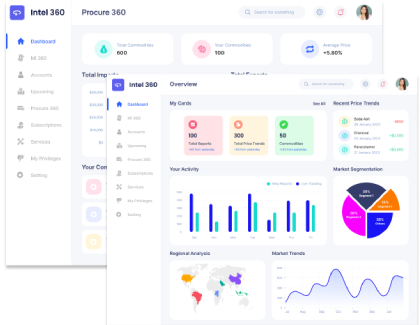The constantly expanding demand for driving comfort and safety is projected to boost the global automotive body control module market. In addition, an increase in demand for compact solutions with technologically advanced functions is expected to drive the market. Primary markets are likely to be North America, Europe, and Asia.
The automotive body control module, also called BCM, is an electronic control unit (ECU) devised especially for activating, monitoring, and regulating the ECU related functions of the vehicle body. The BCM interacts with other vehicle functions through the vehicle bus system and may include a gateway function. Common vehicle body functions in which BCM is involved include interior and exterior lighting, seat comfort, air conditioning, rear and front window wiper and defrost, car access, immobilizer, central locking, auxiliary heating (such as PTC heater) and park heating, power doors, rooftop, window lift, sunroof, power lift-gate, and trunk opener.
Over time, body control modules have evolved and become more complex with advanced features and functions. Certain vehicles come with over 100 loads to activate, monitor, and regulate, leading to a split of body control module functionality into two or more modules, for example front and rear body control module. In order to decrease vehicle body control module and wire harness complexity, manufacturers combine functions in the same area of the vehicle into electronic control units that are supplied, monitored and regulated by the body control module, for example, HVAC (heating, ventilation, and air conditioning) module, door module, seat module, and car access and immobilizer module. Such arrangement or modularization is known as decentralized body control architecture, and may entail some power distribution and in-vehicle network functions. On the other hand, centralized architectures contain fewer modules with more functionality than distributed architectures carrying smaller modules with more communication interfaces. Embedded solutions and the Internet of Things (IoT) are used extensively in the automotive industry to manufacture centralized and distributed body control modules. Due to scalable architecture and AUTOSAR-compatible software modules, body control modules can be easily modified to suit customer requirements and synchronize with a particular vehicle to meet global market demand.
Read more about this report - REQUEST FREE SAMPLE COPY IN PDF
By uniting several functions in one place, body control units decrease the number of cables required, thereby reducing complexity and the weight of the vehicle. Further, a body control module regulates energy flow and prevents consumption of significant amounts of energy at a point of time. This ensures optimal use of energy and prioritizing of functions. This capability is particularly important in electric vehicles because as electric vehicles develop, body control modules would be required to exercise clever energy management to ensure that a vehicle travels the most distance possible before having to recharge the battery.
With developments in vehicle electronics, greater integration of individual functions in central body control modules is expected. This has significant implications for the higher-range and luxury vehicle sector. Such vehicles use large and complex sets of functions and interact more with the overall vehicle electronics system which amounts to a greater and constant exchange of data. This leads to a greater need for communication buses. While vehicle buses such as CAN, FlexRay, LIN, and MOST are extensively employed currently, the future would most likely witness increased use of high-performance Ethernet to enhance data exchange in vehicle electronics.
Market Analysis by Type, Vehicle Type, and Region:
- By type, the market is segmented into CAN and LIN.
- By vehicle type, the market is divided into Passenger Car, Commercial Vehicle, and Electric Vehicle.
- By application, the market is classified into Interior and Exterior.
- By region, the market is segmented into North America, Europe, Asia Pacific, Latin America, and Middle East and Africa.
About Us
Expert Market Research (EMR) is a leading market research and business intelligence company, ensuring its clients remain at the vanguard of their industries by providing them with exhaustive and actionable market data through its syndicated and custom market reports, covering over 15 major industry domains. The company's expansive and ever-growing database of reports, which are constantly updated, includes reports from industry verticals like chemicals and materials, food and beverages, energy and mining, technology and media, consumer goods, pharmaceuticals, agriculture, and packaging.
EMR leverages its state-of-the-art technological and analytical tools, along with the expertise of its highly skilled team of over 100 analysts and more than 3000 consultants, to help its clients, ranging from Fortune 1000 companies to small and medium-sized enterprises, easily grasp the expansive industry data and help them in formulating market and business strategies, which ensure that they remain ahead of the curve.
Contact Us
Expert Market Research
Website: www.expertmarketresearch.com
Email: [email protected]
US & Canada Phone no: +1-415-325-5166
UK Phone no: +44-702-402-5790













